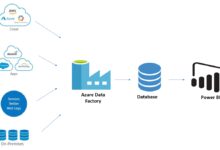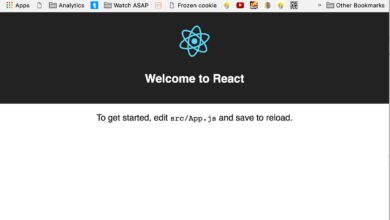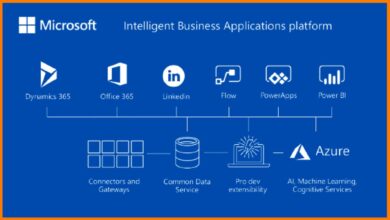Azure Price Cal: 7 Powerful Tips to Master Cloud Cost Control
Managing cloud costs can feel like navigating a maze—especially when you’re dealing with a vast ecosystem like Microsoft Azure. That’s where the Azure Price Cal comes in, a game-changing tool that empowers businesses to forecast, analyze, and optimize their cloud spending with precision. Whether you’re a startup or an enterprise, mastering the Azure Price Cal is your first step toward smarter, more predictable cloud investments.
Understanding the Azure Price Cal: What It Is and Why It Matters

The Azure Price Cal is not just another calculator—it’s a strategic planning tool designed to help users estimate the cost of Azure services before deployment. By inputting specific parameters such as region, service type, and usage levels, users gain a clear financial preview of their cloud infrastructure. This foresight is critical in today’s cost-conscious IT environments.
Defining the Azure Price Cal
The term azure price cal refers to the suite of pricing tools provided by Microsoft, primarily the Azure Pricing Calculator. This web-based tool allows users to build a virtual representation of their intended Azure environment and receive an instant cost estimate. It supports a wide array of services—from virtual machines and storage to AI and IoT solutions.
Unlike static pricing tables, the Azure Price Cal is interactive. You can add, remove, or modify resources in real time and see how each change impacts the total monthly or annual cost. This dynamic functionality makes it indispensable for architects, finance teams, and decision-makers alike.
How the Azure Price Cal Differs from Other Tools
While many cloud providers offer pricing calculators, the Azure Price Cal stands out due to its deep integration with Microsoft’s ecosystem. It’s not just about estimating costs—it’s about aligning them with enterprise strategies, hybrid cloud models, and licensing benefits like Azure Hybrid Benefit or Reserved Instances.
Integration with Azure Advisor: The Azure Price Cal works hand-in-hand with Azure Advisor, which provides real-time recommendations for cost optimization.Licensing Flexibility: It accounts for existing Windows Server or SQL Server licenses, allowing cost savings through Azure Hybrid Benefit.Enterprise Agreement Support: For organizations under Microsoft Enterprise Agreements, the Azure Price Cal reflects negotiated pricing tiers..
“The Azure Price Cal isn’t just a number generator—it’s a financial planning engine for the cloud era.” — Cloud Architecture Expert, Microsoft MVP
Key Features of the Azure Price Cal That Drive Business Value
The Azure Price Cal is packed with features that go beyond simple arithmetic.It’s engineered to support complex decision-making, financial forecasting, and cross-departmental collaboration.Let’s dive into the most impactful features that make the azure price cal a must-use tool for any Azure adopter..
Real-Time Cost Estimation Across Services
One of the most powerful aspects of the Azure Price Cal is its ability to provide instant cost feedback as you configure resources. Whether you’re deploying a single virtual machine or an entire data lake, the calculator updates the total cost in real time.
This feature is especially useful during proof-of-concept phases or budget approvals. Teams can experiment with different configurations—such as switching from pay-as-you-go to reserved instances—and immediately see the financial implications.
For example, selecting a Standard_D4s_v3 VM in the East US region with 16 GB RAM and 64 GB SSD storage shows a monthly cost of approximately $180 under pay-as-you-go pricing. But if you commit to a one-year reserved instance, that drops to around $110—a 39% savings. The Azure Price Cal makes these comparisons effortless.
Support for Hybrid and On-Premises Scenarios
Many organizations operate in hybrid environments, where workloads are split between on-premises data centers and the cloud. The Azure Price Cal uniquely supports these models by allowing users to factor in on-premises licensing and infrastructure costs.
- You can apply the Azure Hybrid Benefit to Windows Server and SQL Server workloads, reducing VM costs by up to 40%.
- The tool lets you compare the total cost of ownership (TCO) between on-premises and cloud deployments.
- It supports scenarios like Azure Arc, enabling cost modeling for servers managed across environments.
This hybrid-aware functionality makes the azure price cal not just a cloud tool, but a holistic financial planning platform.
Export and Sharing Capabilities for Team Collaboration
Cost planning is rarely a solo activity. The Azure Price Cal allows users to save their estimates, generate shareable links, and export configurations to CSV or PDF formats. This is invaluable for presenting proposals to stakeholders, securing budget approvals, or collaborating with external consultants.
For instance, a solutions architect can build a detailed environment in the Azure Price Cal, then share it with the finance team for review. The finance team can then tweak usage assumptions—like expected data transfer volumes or uptime percentages—and instantly see revised costs.
“We saved over $200K in our first cloud migration by using the Azure Price Cal to model multiple scenarios before committing.” — CTO, Mid-Sized SaaS Company
How to Use the Azure Price Cal: A Step-by-Step Guide
Using the Azure Price Cal doesn’t require advanced technical skills, but knowing the right steps can dramatically improve accuracy and efficiency. Here’s a comprehensive walkthrough to help you get the most out of the azure price cal.
Step 1: Access the Azure Pricing Calculator
Visit the official Azure Pricing Calculator page. No login is required to start building estimates, though signing in with a Microsoft account allows you to save and manage your projects.
Once on the page, you’ll see a clean interface with a search bar, a list of service categories (Compute, Storage, Networking, etc.), and a summary panel showing the estimated monthly cost.
Step 2: Add Services to Your Estimate
Begin by searching for the Azure services you plan to use. For example, type “Virtual Machines” to add VMs to your estimate. You’ll be prompted to configure details such as:
- Region (e.g., West Europe, Southeast Asia)
- Instance size (e.g., B2s, D4s_v3, E8_v4)
- Operating system (Windows or Linux)
- Number of instances
- Uptime (e.g., 24/7, 12 hours/day)
Each selection updates the cost in real time. You can add multiple VMs with different configurations to model complex environments.
Step 3: Configure Networking and Data Transfer
Networking costs are often overlooked but can significantly impact your bill. In the Azure Price Cal, you can add services like:
- Virtual Network Gateways
- Load Balancers
- Data Transfer (inbound, outbound, inter-region)
- Bandwidth pricing based on volume tiers
For example, transferring 10 TB of data out of Azure to the internet in North America costs approximately $90 under standard rates. The Azure Price Cal automatically applies tiered pricing, so the first 10 GB is free, the next 10 TB is $87, and so on.
Step 4: Optimize with Reserved Instances and Savings Plans
To reduce costs, explore long-term commitment options. The Azure Price Cal includes toggles for:
- Reserved VM Instances (1-year or 3-year terms)
- Azure Savings Plans (compute usage-based discounts)
- Hybrid Benefit eligibility
Enabling a 1-year reservation for a D4s_v3 VM can cut costs by 35–45%, depending on the region. The calculator shows both the upfront and monthly payment options, helping you align with budget cycles.
Step 5: Review, Export, and Share
Once your estimate is complete, review the summary. You can:
- Save the estimate to your Microsoft account
- Generate a PDF report for stakeholders
- Share a link with team members for collaboration
- Export to CSV for integration with financial systems
This structured approach ensures that your azure price cal estimates are not only accurate but also actionable and shareable.
Advanced Strategies for Maximizing Azure Price Cal Accuracy
While the Azure Price Cal is user-friendly, achieving high accuracy requires attention to detail and an understanding of Azure’s pricing nuances. Here are advanced techniques to refine your estimates and avoid costly surprises.
Account for Hidden Costs and Egress Fees
One of the biggest pitfalls in cloud budgeting is underestimating data egress fees—costs for transferring data out of Azure. While inbound data is free, outbound transfers are charged based on volume and destination.
The Azure Price Cal includes egress pricing, but you must manually input expected transfer volumes. For example:
- 0–5 TB: $0.08/GB
- 5–50 TB: $0.085/GB
- 50–150 TB: $0.04/GB
- 150+ TB: $0.03/GB
For a media company streaming 20 TB of content monthly, egress costs alone could reach $1,700. The azure price cal helps you model this by adding a ‘Data Transfer’ item and specifying the volume and destination region.
Leverage Spot Instances and Low-Priority VMs
To further reduce costs, consider using Azure Spot VMs, which can offer up to 90% discounts compared to on-demand pricing. These are ideal for fault-tolerant, interruptible workloads like batch processing or CI/CD pipelines.
The Azure Price Cal includes a ‘Spot’ option when configuring VMs. Enabling it instantly shows the reduced cost. However, you must also factor in potential interruptions—something the tool doesn’t model but should be part of your risk assessment.
Model Multi-Region and Global Deployments
For global applications, you may deploy resources in multiple regions. The Azure Price Cal allows you to add services from different regions and compare pricing. For example, a VM in West US might cost $0.10/hour, while the same VM in Australia East costs $0.13/hour.
Use this to optimize for both performance and cost. You can also model cross-region data replication and backup strategies, ensuring your disaster recovery plan fits within budget.
“We used the Azure Price Cal to compare 5 regions for our new app launch. We saved $45K annually by choosing the optimal region.” — Cloud Infrastructure Lead, Global Retailer
Integrating the Azure Price Cal with Other Cost Management Tools
The Azure Price Cal is just the beginning of your cost management journey. To maintain control over your cloud spend, integrate it with other Azure-native and third-party tools for ongoing monitoring and optimization.
Azure Cost Management + Billing
Once your resources are live, Azure Cost Management takes over. It provides detailed reports, budget alerts, and cost allocation by department, project, or tag.
While the azure price cal is for pre-deployment planning, Cost Management is for post-deployment control. Use both in tandem: estimate with the calculator, then monitor actuals with Cost Management.
Azure Advisor Recommendations
Azure Advisor analyzes your live environment and suggests optimizations—like resizing underutilized VMs or enabling auto-shutdown. These recommendations can be fed back into the Azure Price Cal to model the financial impact of proposed changes.
For example, if Advisor suggests downgrading a VM from D8s_v3 to D4s_v3, you can update your estimate in the calculator to see the projected savings—often 40–50%.
Third-Party Tools and FinOps Integration
For enterprises practicing FinOps (Financial Operations), tools like CloudHealth by VMware, Azure-native Apptio, or Flexera can import data from the Azure Price Cal or sync with live Azure usage.
- These platforms provide advanced forecasting, chargeback/showback models, and executive dashboards.
- They support multi-cloud cost analysis, which is useful if you’re also using AWS or Google Cloud.
- Integration ensures that your azure price cal estimates are part of a larger financial governance framework.
Common Mistakes to Avoid When Using the Azure Price Cal
Even experienced users can make errors when estimating cloud costs. Here are the most common pitfalls and how to avoid them.
Overlooking Data Transfer and Egress Costs
As mentioned earlier, egress fees are a frequent oversight. Always include data transfer in your estimate, especially if your application serves global users or integrates with third-party services.
Ignoring Idle or Orphaned Resources
The Azure Price Cal assumes all resources are actively used. In reality, idle VMs, unattached disks, or unused IP addresses can inflate costs. Use Azure Advisor to identify these and adjust your estimates accordingly.
Underestimating Growth and Scalability Needs
Many estimates are based on current usage, but cloud environments scale dynamically. Use the Azure Price Cal to model future growth—double your VM count, increase storage by 200%, or add CDN usage—and see how costs evolve.
“We underestimated our scaling needs by 3x. The Azure Price Cal helped us revise our budget before launch.” — DevOps Manager, Fintech Startup
Real-World Use Cases: How Organizations Use the Azure Price Cal
The true value of the azure price cal shines in real-world applications. Let’s explore how different industries and company sizes leverage it for strategic advantage.
Enterprise Migration to Azure
A Fortune 500 company planning to migrate 500 on-premises servers to Azure used the Azure Price Cal to model multiple scenarios: full lift-and-shift, hybrid, and cloud-optimized architectures. By comparing TCO and incorporating Reserved Instances, they reduced projected costs by 32% and secured executive buy-in.
Startup Launching a SaaS Product
A startup building a new SaaS platform used the Azure Price Cal to create a 3-year financial model. They experimented with different VM types, storage tiers, and CDN usage, ultimately choosing a cost-effective combination that allowed them to offer competitive pricing while maintaining margins.
Educational Institution Deploying Online Learning
A university launching a massive open online course (MOOC) used the Azure Price Cal to estimate bandwidth and compute needs during peak enrollment. By modeling traffic spikes and using Azure CDN, they optimized costs and avoided over-provisioning.
Future Trends: How the Azure Price Cal Is Evolving
Microsoft is continuously enhancing the Azure Price Cal to meet the demands of a growing and complex cloud market. Here are some upcoming trends and features to watch for.
AI-Powered Cost Forecasting
Future versions of the Azure Price Cal may integrate AI to predict usage patterns based on historical data or industry benchmarks. This would allow more accurate long-term forecasting without manual input.
Carbon Emission Estimation
As sustainability becomes a priority, Microsoft is exploring ways to include carbon footprint estimates in the Azure Price Cal. This would help organizations choose regions and services with lower environmental impact.
Deeper Integration with DevOps Pipelines
Imagine triggering a cost estimate every time a new infrastructure-as-code (IaC) template is committed. Future integrations could embed the azure price cal directly into CI/CD pipelines, providing real-time cost feedback during development.
These innovations will make the Azure Price Cal not just a financial tool, but a strategic enabler of sustainable, efficient cloud adoption.
What is the Azure Price Cal?
The Azure Price Cal refers to the Azure Pricing Calculator, a free online tool that helps users estimate the cost of Azure services before deployment. It supports real-time cost modeling for compute, storage, networking, and more.
Is the Azure Price Cal accurate?
Yes, the Azure Price Cal uses up-to-date pricing from Microsoft and accounts for variables like region, usage, and discounts. However, actual costs may vary based on usage patterns, so it should be used as a planning tool, not a billing guarantee.
Can I save my estimates in the Azure Price Cal?
Yes, if you sign in with a Microsoft account, you can save, edit, and share your estimates. You can also export them to PDF or CSV for reporting and collaboration.
Does the Azure Price Cal include taxes?
No, the Azure Price Cal provides pre-tax estimates. Taxes and additional fees may apply based on your region and billing setup.
How can I reduce costs using the Azure Price Cal?
You can use the Azure Price Cal to compare pricing models (pay-as-you-go vs. reserved instances), apply Azure Hybrid Benefit, choose cost-effective regions, and model the impact of Spot VMs or auto-shutdown policies.
Mastering the Azure Price Cal is essential for any organization leveraging Microsoft Azure. It transforms cloud cost management from a reactive to a proactive process, enabling smarter decisions, better budgeting, and greater financial control. By understanding its features, avoiding common mistakes, and integrating it with broader cost management practices, you can unlock significant savings and strategic advantages. Whether you’re planning a migration, launching a new product, or optimizing existing workloads, the Azure Price Cal is your trusted ally in navigating the complexities of cloud economics.
Recommended for you 👇
Further Reading:









